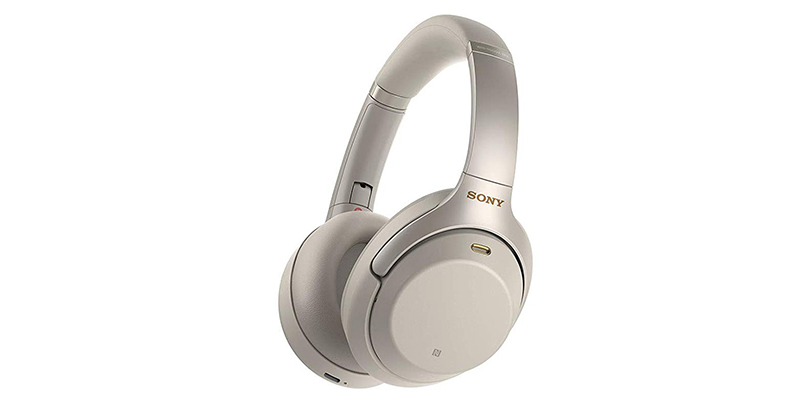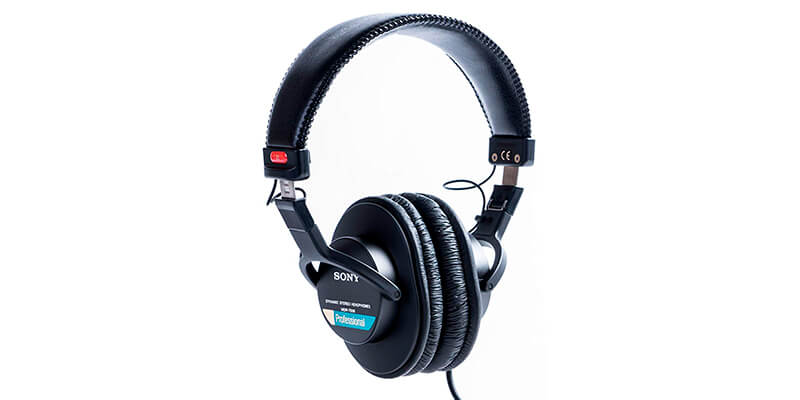The best headphones for video editing differ from the phones aimed for day-to-day use. For editing, the professional must deal with the sound as it is, with zero additions, and estimate it from the point of view of the potential listener. While the coloration and rich booming bass are usually positive features, for editing headphones, they can become a deal breaker.
However, the market offers multiple options for headphones made for audio editing. The difference points are the following:
- Usage. The headphones can be made solely for editing purposes or can have features making them a good option for music listening. The latter is usually much pricier.
- Frequency response. The wider it is, the more details and tiny sounds are discernible through the headphones. The easier is the task of editing.
- Noise isolation. Depending on the actual needs and situation, the sound editor might need closed or open headphones, with better or less efficient sound isolation.
- Comfort. Editing for several hours on end might result in considerable fatigue; so, the padding, weight, and adjustable design are important parts of the headphones for sound editing.
- Price. Usually, the more versatile models with higher frequency response and noise cancellation effect cost more. However, the modern software for video editing and the skills of the editor himself matter as well.
There are plenty of headphones on the market offering numerous options and their combination. Check the reviews and find your best headphones for editing!
Headphones for Video Editing Reviews
Bose QuietComfort 35 II Wireless Bluetooth Headphones

Automatic sound optimization, richness of details, and efficient noise cancellation in different circumstances make this model claim to be the best headphones for video editing. Still, these headphones provide fewer opportunities for smartphone control with regard to equalizing, in comparison to some of the competitors.
The headphones feature many digital technologies for purifying the audio from interference and outlining the mainline and details. It does an equally good job in conveying a variety of ambient sound and making the dialogue or the main music line stand out, all options are adjustable. It produces dynamic and deep bass, with good balance and concentration. The mids are clear and detailed, while the high-frequency sound may be too loud.
The headphones have a high signal-to-noise ratio, ensuring the solid well-balanced sound throughout the volume range. The volume control is sensitive and handy to use both through voice assistant and on-cup buttons.
The unit pairs to any gadget quickly through Bluetooth establishing immediate playback. The navigation is simple, and the ability to tweak the settings and create a personalized profile is a great addition. The Bose Connect app also provides a sound equalization option.
Noise cancellation works well for removing the side effects or the ambient sounds. It is performed via three modes that provide different levels of noise suppression. Besides, it can be adjusted through the on-board control, the app or via the voice assistant.
The headphones are simple in design and sturdy though lightweight. Having just a bit over 0.5 lb they aren’t tiresome to wear for hours. The cups might be a fraction deeper, while the padding is soft yet shape-preserving and fitting the ears well. The headphones don’t cause fatigue within several hours of editing and hold on the head firmly, giving the freedom of movement to the sound editor.
Pros
- The noise cancellation is engaged immediately upon activation, without delay and stops.
- Contextual sound adjustment through Bose AR technology lets make the sound more voluminous and diverse in the studio conditions.
- Intuitive on-board controls: easy to spot and to use.
Cons
- The earpads get hot very quickly.
Sony WH1000XM3 Noise Cancelling Headphones

Wireless design, voice control, and active noise cancellation make this model stand out of the general offers line and claim the title of the best video editing headphones. Still, the limited connection capabilities, inability to pair simultaneously to multiple devices can create issues with editing involving numerous sources.
These professional-class headphones feature high-quality sound processing and transmission resulting in a clear and detailed dialogue, diversified music tonality and flat response providing the rich natural sound. The levels of bass, pitch, etc. can be adjusted via the digital equalizer available through the smartphone app.
The audio is streamed in the 32-bit format and is purified from most of the noise and intrusions creating a clear and detailed tonal picture. At the same time, the response is flat, with high signal-to-noise parameter, conveying the sound “as intended”. The mids are solid and well-outlined, the highs are accurate and the bass is expansive while not invasive. Such tonality balance provides for the mixed use of headphones, both for professional editing tasks and music listening.
The frequency range is vast having the 40 kHz as an upper limit. The headphones are sensitive throughout the range, letting out the clear dialogues, even the background sounds.
The headphones have 40mm drivers of high-quality polymer, cutting the noise. The additional digital technology outlines each word and tune precisely, letting discern the tiniest sounds easily, which is highly important during editing. The Sony WH1000XM3 can analyze different personal and environment parameters to exclude any type of interference.
The headphones are cable-free establishing the freedom of motion around the studio. The battery is quite capable of ensuring more than a day of continuous operation. The battery replenishes quickly at the first stage of charging allowing to come back to editing within some ten-fifteen minutes.
Pros
- Quick and easy activation of voice control.
- Sturdy build ensures durability even at frequent folding and swiveling of the cups.
- Comfortable soft padding doesn’t wear the ears during long-lasting editing.
Cons
- The ear cups are a bit shallow.
- The charging cable is short.
Sony MDR7506 Professional Large Diaphragm Headphone

These professional headphones for video editing have a tailor-cut set of features required for studio editing needs. Efficient noise cutting and high-quality flat sound combined with the comfort of many hours wearing make a great offer for a small price they are sold at. Still, these headphones aren’t optimal for music listening or other non-professional daily tasks.
The headphones handle the power efficiently due to the neodymium magnets installed. The latter engages the drivers, which have 40 mm in diameter and provide the full spacious sound with a good amount of detail.
The headphones catch the tiniest sounds or effects within the range of 10 Hz – 20 kHz, letting the editor outline the particular sound or estimate the part of each one in the complex audio line. The mids are confident and convey the presence of the sound. The bass is well discernible up to the lowest limit, detailed, and accurate. Highs are clean and mellow, without shrieking or too much brightness.
The sensitivity is quite high reaching 106 dB. Each tune and syllable is conveyed precisely and in full, on any volume level. The produced audio is powerful and clean, concentrated around the middle line.
Closed ear design and wrapping ear cup construction bring good noise isolation from the outer world, letting concentrate on the editing tasks. The padding might seem a bit stiff from the beginning while ensuring the firm hold of the headphones on the head. The band is padded as well, providing extra comfort for long-lasting usage.
The connection is a coiled almost 10-feet cable of a medium gauge, flexible yet not getting entangled easily. It has the sturdy gold-plated connector and a ¼ inch adapter to enable quick connection to different sources. The headphones are easily collapsed and stored into the textile carrying bag, letting use them for on-field editing.
Pros
- Lifelike sound, with tonal balance lingering to highs and upper mids; no harshness.
- The sound leakage is minimal, next to zero.
- Sturdy build, reliable adjusting mechanism.
Cons
- The cord isn’t detachable, without the option of the quick replacement.
- Make the ears sweat in the hot environment.
Audio-Technica ATH-M50x Professional Headphones

These solid headphones have premium build and specs delivering the fully present lifelike sound. They provide a lot of detail and feature different connectivity options enabling the usage for various studio activities.
The headphones draw attention first of all due to the solid frequency range covered, from 15 Hz to 28 kHz. Throughout this range, the audio is very clean and detailed, with good imaging. All the instruments, vocals, and effects are easily discernible and accurately pictured.
This model has a standard sensitivity of 98 dB and quite low impedance of 38 Ohms, enabling their usage with smartphones. They feature large drivers having 45 mm in diameter and powered by the rare earth magnets. The voice transmission is highly detailed and accurate, enhanced by the aluminum voice coil.
The soundstage created is rather narrow, with the sound starting right at the ear. The lows and highs are pictured in colors and with detail, while the mids seem a bit recessed. So is the bass at the lowest frequencies, featuring some muddiness. At the same time, highs are pictured with more accent, letting the editor deal with the tiniest details without effort.
The headphones are comfortable to wear for a few hours; however, the hard parts might start to feel through the foam-like padding upon several hours of continuous wearing. The earcups aren’t too large, which is good for people with small and mid-sized ears.
These phones have good portability. They fold simply, and the cable is detachable, which is also future proof. There are two types of cords offered a straight and a coiled one, to ensure the most comfortable position while analyzing the sound charts or actually editing.
Overall, these are professional quality headphones for sound editing, with high detailing and accurate imaging. Meanwhile, the Amazon Audio Technica M50X page shows the price comparable to that of the much less praised models, making them yet more attractive offer.
Pros
- No coloration, flat response throughout the range.
- The earcups swivel easily enabling one-ear samples estimation.
- Reliable damage-proof construction, with thick plastic and metal headband.
Cons
- The connector is proprietary; no regular cables fit.
- Not fit for wearing the glasses along (too much pressure on the temple zone).
Sennheiser HD280PRO Headphone

High-quality build, vast frequency range conveyed, accurate sound imaging don’t make the full list of the merits of Sennheiser HD 280 Pro Amazon offer. The powerful performance and efficient cutting of the outside noise let them reside on top of the picks for headphones for professional editing.
With high sensitivity and wide frequency array, this model draws the precise image of each sound it conveys. The lows starting at 8 Hz are warm and dense, deep enough to portray a lifelike performance. Mids are a bit bright but mellow, with fluid yet accentuated flow. Highs are clear to the edge of being transparent while staying distinct and precise. Dialogues stand out and keep all the reverberations and intonation particulars.
The 64-Ohm impedance makes them studio-bound headphones while providing the powerful, rich audio. The soundstage is big and imaging is precise. The sensitivity of 113 dB lets the sound stay clear up to the loudest points, for the quick decoding by the editor.
The headphones have a closed design, with highly efficient noise attenuation technology. For clean editing purposes, the noise can be suppressed almost to the flat quietness. The circumaural pads design ensures the isolation of the outside sounds, up to 32 dB, so the quiet conversation wouldn’t interfere with the audio monitoring.
These headphones are made of thick plastic and metal and feel highly durable. The pads are made of synthetic leather and are soft and comfortable for long usage. They swivel easily, letting the editor quickly react to other events around. All the padding bits and the cables can be replaced without much effort applied, which is important upon several months of the constant use for editing purposes.
Pros
- Completely neutral, while lively and engaging sound.
- Bulky pads on the headband ensure comfortable usage for hours.
- Original collapsible design.
Cons
- Two times heavier than most of the competitors (1.28 lb).
- Stiff cables and plugs, not quick-and-easy to connect.
How to Choose the Best Headphones for Video Editing?
Picking the optimal headphones for editing might seem a simple task; still, there are peculiarities making the final performance differ from what you expected. Let’s list must-have features for such headphones that are praised by video editing professionals:
- Flat response. While the music listening headphones can be boomy or soft-sounding, the headphones serving the video editing needs must represent the sound as it is (and, importantly, as it will sound from the screen). That’s why zero coloration is the obligatory feature for video editing headphones.
- Accurate imaging and precise detailing. The editor must hear the tiniest detail or a sound effect of the record, as well as discern the changes introduced. This is possible only with headphones providing a complete and true image of each sound and its “location” on the soundstage. These parameters are reached through the quality drivers and wiring implementation, efficient amplification, and resonance suppression.
- Inner and outer noise suppression. The quality video editing is impossible in a noisy environment. That’s why, the modern professional and amateur editors mostly prefer the closed-ear headphones, not letting the sound come in or out the headphones. Still, for the purposes of estimating the final sound of the video in a cinema or alike vast space, the open back headphones serve perfectly. Another important issue is the inner noise suppression performed by some professional headphones. The side effects, ambient sounds, etc. are quieted down, while the mainline is unfolded in its fullness.
- Comfort during long-lasting wearing. Video editing can take several hours, sometimes even days. Headphones being constantly on the head, the editor’s comfort stands out with increased importance. The headband must be fitting the head precisely, without pressing on it. The padding of ear cups and the band should be non-sweating one, with dense structure, holding their shape yet soft.
- Flexibility. They must simply connect to the PC, smartphone, mixer panel, and so on. The wireless models are the handiest for this purpose. However, they don’t always convey the same sound quality as wired headphones. A good solution is the wired headphones with detachable cable and different plugs.

Hi everyone! I’m Thomas Moody, also known as Guitarzan.
